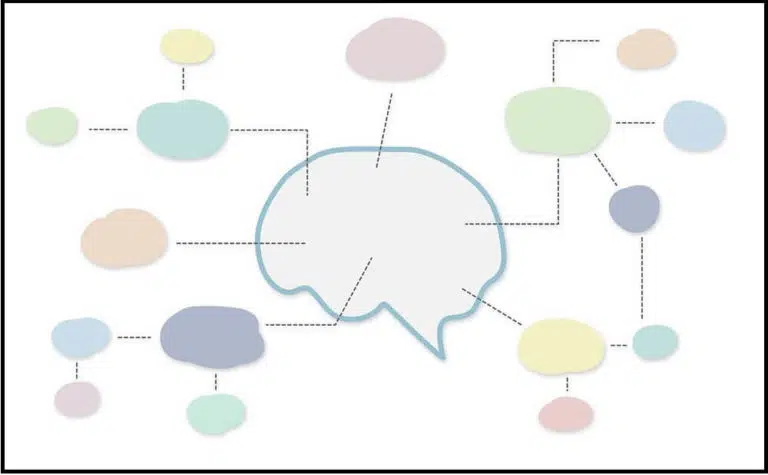Businesses rely on many metrics to evaluate the performance of their employees, departments, or the organization. These metrics help them track key result areas for these parties, ensuring their objectives are met.
In today’s blog post, we’ll discuss the concept of Key Result Areas, explore their benefits in an organization, the preparation required to produce effective KRAs, and even provide some illustrative examples.
What Is a Key Result Area?
A Key Result Area (KRA) is a set of goals that dictate how employees, units, or organizations perform their duties. The management anticipates that workers will carry out tasks related to their roles, with these tasks serving as stepping stones toward achieving the business objectives.
Key Result Areas are measurable goals a business sets for an employee to track their progress and success. It helps employees understand their roles and responsibilities.
KRA can be tailored to individual employees, specific sections, entire units, or the whole organization and vary depending on organizational needs and job designations.
Benefits of KRA
Clarifies Roles and Responsibilities
KRA plays a crucial part in defining the work function of an employee. It clears any uncertainty in roles and provides clear directions so employees can achieve their success and organizational goals.
Synchronizes Employee Roles
The KRA aligns with the overall organizational goal. It ensures all employees are on the same page and that they act to accomplish the same target. Their unified actions propel accomplishments in line with the organization’s vision, enhancing synchrony in all work functions.
Prioritizes Results over Activity
Key result areas help organizations concentrate on the outcomes rather than the activities. Knowing and focusing on their goals motivates employees and improves efficiency.
Communicates the Roles of Others
KRA helps employees understand the part they have to play in achieving goals. This knowledge further clarifies their roles, reduces work conflicts, and improves coordination.
Specifies Organizational Objectives
KRA creates a culture where individuals take responsibility for their actions and adopt a results-driven mindset.
Organizes Priorities
Given the number of tasks employees can undertake, KRA helps them differentiate the critical tasks from the less crucial ones. This enables them to prioritize tasks effectively, thus completing the high-priority tasks first.
How to Prepare Effective Key Result Areas for an Individual
Preparing key result areas requires the following steps:
#1. Analyze Performance
Examine and prepare a list of roles and responsibilities. Evaluate how well tasks are handled and the time spent daily, weekly, or monthly. Include any additional duties the person/department should take on and separate those to assign to another person/department.
#2. Discuss KRA with Management
Discuss the KRA with supervisors. Talking KRAs with coworkers or the team is important to get their buy-in. Review the completed tasks.
Ask questions like:
- What is my purpose in being here?
- What am I in charge of?
- How does my position benefit the business?
- What may I hand off to another person?
- What actions should my department take?
Confer with the management to confirm the authorized tasks assigned to the staff.
#3. List the Precise Job Description of the Position
Listing out the precise job descriptions and activities for each position helps the employee assess whether they are appropriate for that role. This exercise can also help with adding or deleting employees’ tasks to improve their performance.
It is important to clearly define these tasks to ensure the employees know their responsibilities and to determine whether they are suitable for specific tasks. You should concentrate on the following factors when assessing a business:
- Profit
- Consumer contentment
- Employee satisfaction
- Good product
- Creativity
All of these factors help ensure the long-term success of a business.
#4. Establish KPIs to Assess KRAs
Decide the key performance indicators (KPIs) to measure KRAs. KPIs demonstrate how successfully strategic goals are being achieved. For instance, if the KRA relates to profit, a relevant KPI to measure profit could be the monthly percentage change in profitability.
#5. Write Out the Key Result Areas
Maintain the agreed-upon key result areas on file so they are easily accessible in the future. Everyone must agree with and sign the defined KRAs.
Here are two KRAs to take into account:
- Before introducing the new product, develop a marketing strategy before the conclusion of the second quarter.
- Create a social media platform to boost the business website and reach additional users by going online in the next month.
Although there is no set format to adhere to, the document can include:
- The name of the worker
- Department of personnel
- Company’s superior
- Role description and how it relates to the business objectives
- Information on performance standards
- Tools for measuring expectations
#6. Regularly Review and Update KRAs
Job roles may change, responsibilities may get passed on to others, and new responsibilities may be given. However, the KRA should always be up-to-date. A supervisor can decide how frequently the KRA documentation is examined and evaluated.
KRA Individual Template
The following template may be used to construct key result areas for an employee. KRAs and the key performance indicators connected to them are listed in the template.

Key Results Areas Examples
Each person, department, and corporation has its own KRA.
The following lists show a few common KRAs:
Examples of KRAs for the Sales Department
- The number of sales increased relative to the preceding tenure
- A higher profit margin than during the prior term
- An increase in the number of potential clients approached
- Implementing an online sales strategic plan successfully.
KRA Case Studies for Marketing Directors
- Increased brand awareness and presence for customer acquisition
- Promotional tactics to enhance brand perception.
- Reduce marketing expenses per new customer.
- Increase the proportion of customers who purchase things after becoming aware of the business through marketing.
- Improve the customer-to-marketing budget ratio.
Examples of KRAs for HR Professionals
- Improve job vacancy advertising.
- Effective selection of candidates for employment
- The cost of recruiting decreases
- Keeping on existing personnel
- Reduced staff turnover
- An increase in the acceptance rate of employment offers.
Customer Service Representative KRA Examples
- Effectively answering consumers’ questions.
- Address customer concerns effectively.
- Increase client loyalty.
- Boost customer satisfaction, particularly among disgruntled clients.
Examples of KRAs for Product Managers
- Increase product revenue over the prior period.
- Acquire new clients for the product.
- Encourage repeat purchases and product usage among existing consumers.
- Make sure both existing and potential clients appreciate the product.
Examples of KRA for Project Managers
- Ensure timely, scheduled, and budgeted project completion.
- Improve the project’s cost forecasts for individual components.
Examples of KRAs for Financial Managers
- Ensure an increase compared to the prior period in terms of resources.
- Encourage greater corporate profitability compared to the preceding period.
- Boost cash flow.
- Boost the efficiency of internal business operations.
Examples of KRAs for IT Professionals and System Administrators
- Become more effective in addressing and resolving user issues.
- Boost the level of satisfaction among employees with technology use.
- Make sure the networking system is always functional.
Examples of KRAs for Executives
- Ensure that the executive’s daily routine runs well and that they effectively use their time to promote the company.
- Help the executive with communications with internal staff members and external stakeholders.
- Ensure that any administrative chores carried out on their behalf are finished quickly.
Examples of KRAs for Educators
- Boost professional expertise through high-quality instruction.
- Increase student engagement with outstanding instruction.
- Help kids learn more often.
Example KRAs for Schools and Universities
- Boost the caliber of education.
- Boost productivity for high-quality education.
- Educate pupils well to keep them interested.
- Improve the way pupils get ready for careers or college.
Procurement Managers: KRA Examples
- Strengthen supplier adherence to the terms of their contracts.
- Make sure the organization gets the right products on schedule.
- Boost the effectiveness of placing orders.
Examples of KRA for Internal Advisors
- Increase internal audits in critical organizational areas and places where there is a danger of failing to comply with rules.
- Boost the auditing quality.
- Improve the effectiveness of audits.
Business Analysts: KRA Examples
- Boost the caliber of the business analysis suggestions.
- Ensure and enhance employee satisfaction while dealing with business analysts.
Why are Key Result Areas Important for Company Growth?
Key results areas are critical for a business’s success for the following reasons:
KRAs Promote Productivity and Assure Focus
According to the Pareto Principle, 20% of causes result in 80% of the effects. By adeptly utilizing that 20% of the operations, organizations can yield 80% of their results. Thus, highlighting important activities encourages employees to focus on them, leading to an increase in productivity.
They Coordinate With Both Organizational and Personal Goals
Businesses frequently lose sight of their objectives. However, when the employees have their KRAs written down, it is simpler to synchronize their daily tasks with their long-term objectives. When each employee matches their desired outcomes with those of their organization, they contribute to that organization’s growth in its purest form.
They Guarantee a Methodical Division of Labor
The supervisor can effectively allocate work amongst the subordinates after they know the department’s primary outcome areas. It ensures organizational productivity.
They Encourage Efficient Work
The work that is unique to a department is included in its KRAs. Employees know the impact of their poor performance. This sense of accountability inspires them to stay on task and do better work.
They Support Performance Tracking
An organization can monitor the development of its departments and workers using KRAs.
Conclusion
Implementing KRAs into organizational management enhances performance and empowers staff to pursue business objectives. Setting attainable goals, communicating effectively, tracking progress properly, and overcoming resistance to change are all ways that organizations may successfully apply KRAs.

I am Mohammad Fahad Usmani, B.E. PMP, PMI-RMP. I have been blogging on project management topics since 2011. To date, thousands of professionals have passed the PMP exam using my resources.







